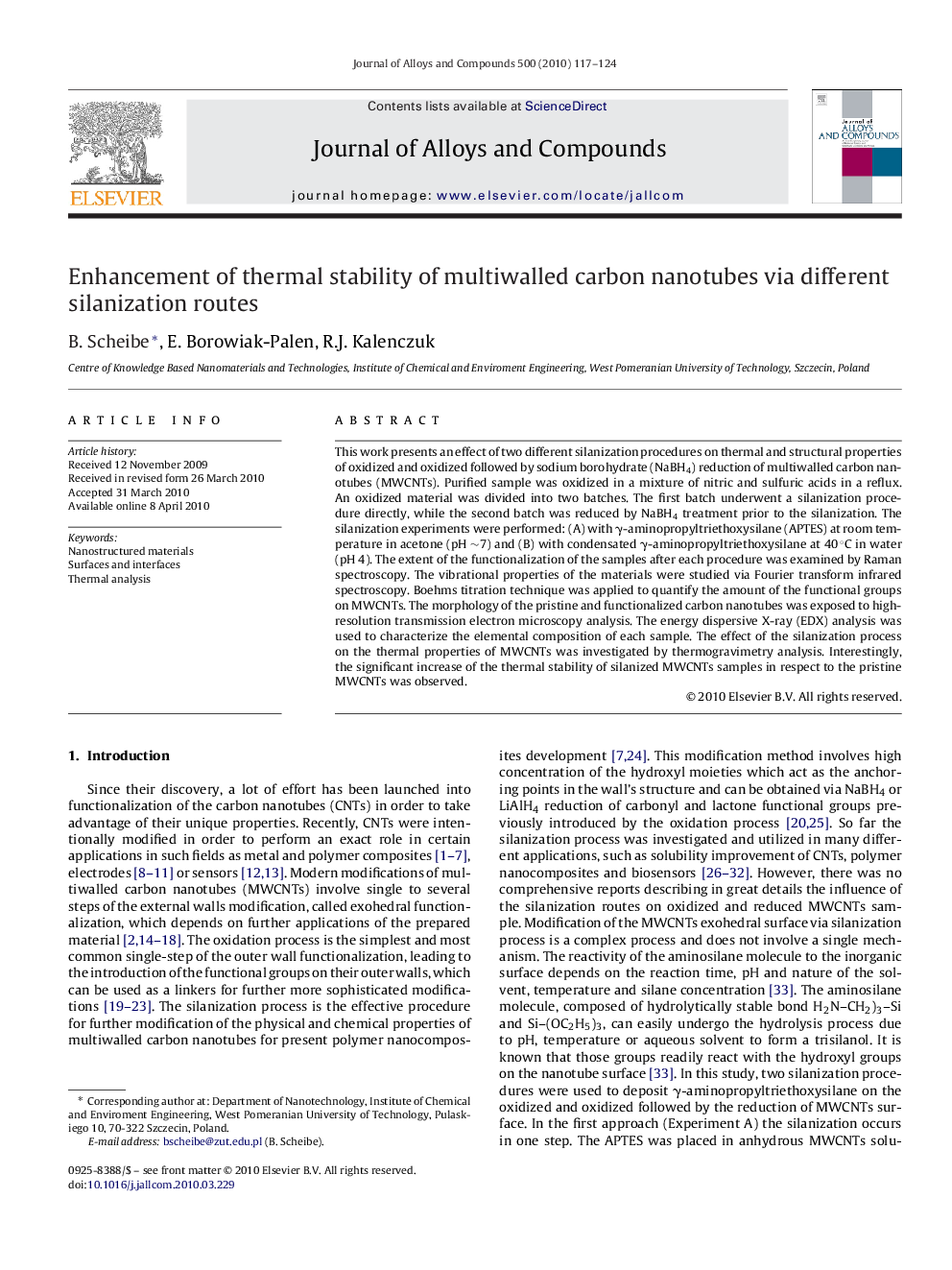| Article ID | Journal | Published Year | Pages | File Type |
|---|---|---|---|---|
| 1620259 | Journal of Alloys and Compounds | 2010 | 8 Pages |
Abstract
This work presents an effect of two different silanization procedures on thermal and structural properties of oxidized and oxidized followed by sodium borohydrate (NaBH4) reduction of multiwalled carbon nanotubes (MWCNTs). Purified sample was oxidized in a mixture of nitric and sulfuric acids in a reflux. An oxidized material was divided into two batches. The first batch underwent a silanization procedure directly, while the second batch was reduced by NaBH4 treatment prior to the silanization. The silanization experiments were performed: (A) with γ-aminopropyltriethoxysilane (APTES) at room temperature in acetone (pH â¼7) and (B) with condensated γ-aminopropyltriethoxysilane at 40 °C in water (pH 4). The extent of the functionalization of the samples after each procedure was examined by Raman spectroscopy. The vibrational properties of the materials were studied via Fourier transform infrared spectroscopy. Boehms titration technique was applied to quantify the amount of the functional groups on MWCNTs. The morphology of the pristine and functionalized carbon nanotubes was exposed to high-resolution transmission electron microscopy analysis. The energy dispersive X-ray (EDX) analysis was used to characterize the elemental composition of each sample. The effect of the silanization process on the thermal properties of MWCNTs was investigated by thermogravimetry analysis. Interestingly, the significant increase of the thermal stability of silanized MWCNTs samples in respect to the pristine MWCNTs was observed.
Related Topics
Physical Sciences and Engineering
Materials Science
Metals and Alloys
Authors
B. Scheibe, E. Borowiak-Palen, R.J. Kalenczuk,
